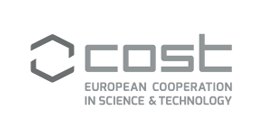Home institution. Name of the applicant: Vittoria Monaco. Affiliation: University of Naples "Federico II", Italy
Host institution: Name of the host lab PI: Elisabeth Davioud-Charvet. Affiliation: Bio(IN)organic & Medicinal Chemistry Team, Laboratoire d'Innovation Moléculaire et Applications (LIMA), European School of Chemistry, Polymers and Materials (ECPM), Strasbourg, FR.
Summary
Plasmodione is a novel antimalarial early lead drug that is highly effective in limiting the proliferation of malaria parasites in vitro in the nM range with very moderate toxicity in the host cells. In the STSM project, the young doctoral researcher will develop the Activity-based Protein Profiling (ABPP) strategy by 1) using photoreactive clickable derivatives of plasmodione to form protein adducts upon UV-irradiation and the click reaction, and 2) performing the pulldown of the probe-protein adducts from yeast and E. coli proteomes, 3) analyzing the protein adducts by mass spectrometry to identify the plasmodione interactome. After optimization of the ABPP protocols, the strategy will then be applied by the PhD applicant to parasite proteomes, allowing future experiments of validation of the drug target proteins by genetic engineering in Plasmodium.
Goals of the STSM
In the search for the antimalarial plasmodione (PD) targets [1], the host lab designed PD-activity-based protein profiling (ABPP) tools. The metabolic PD pathway is known to generate a photoreactive benzophenone-like group in the structure of PDOred, which mediates the covalent bonding of proteins upon UV irradiation. To fish the PD-protein adducts, the host lab prepared diversely functionalized PD(O)-derived alkynes[2] that can react in the click (CuAAC) reaction with biotin or fluorescent azides, allowing to pull down the adducts and analyze them by mass spectrometry.
After a demonstration of the proof-of-concept with pure proteins [2], the goals of the PhD applicant will be first, to apply the ABPP strategy to parasitic proteomes to evidence that the strategy using PDO-based ABPP probes is effective to detect PD-targets. In a second time, the strategy will be applied to P. falciparum proteomes to check if the ABPP strategy can lead to sufficient detection and MS analysis of PD-targets in the highly diluted parasite-specific proteome extracted from parasitized red blood cells. The optimization will involve various conditions to screen and optimize: UV-protein alkylation, CuAAC reaction with biotin azide or fluorogenic azides, pull down of the adducts, various detection methods in SDS-PAGE gels and Western-Blots, MS analysis of peptides after digestion of protein adducts.
References
[1] Cichocki BA, Donzel M, Heimsch KC, Lesanavičius M, Feng L, Montagut EJ, Becker K, Aliverti A, Elhabiri M, Čėnas N, Davioud-Charvet E. Plasmodium falciparum Ferredoxin-NADP+ Reductase-Catalyzed Redox Cycling of Plasmodione Generates Both Predicted Key Drug Metabolites: Implication for Antimalarial Drug Development. ACS Infect Dis. 2021 Jul 9;7(7):1996-2012. doi: 10.1021/acsinfecdis.1c00054. Epub 2021 Apr 15. PMID: 33855850.
[2] Cichocki B, Khobragade V, Donzel M, Cotos L, Blandin S, Schaeffer-Reiss C, Cianférani S, Strub J-M, Elhabiri M, Davioud-Charvet E. A new class of valuable (pro-)activity-based protein profiling probes: application to the redox-active antimalarial drug, plasmodione. JACSAu 2021, 1, 5, 669-689. doi: 10.1021/jacsau.1c00025
[3] Lee W, Huang Z, Am Ende CW, Seneviratne U, Protocol for clickable photoaffinity labeling and quantitative chemical proteomics, STAR Protoc. 2021, 2(2):100593.doi: 10.1016/j.xpro.2021.100593
[4] Iacobucci I, Monaco V, Cozzolino F, Monti M. From classical to new generation approaches: an excursus of -omics methods for investigation of protein-protein interaction networks, J Proteomics. 2021 Jan 6;230:103990. doi: 10.1016/j.jprot.2020.103990.
[5] Andolfo I, Monaco V, Cozzolino F, Rosato BE, Marra R, Cerbone V, Pinto VM, Forni GL, Unal S, Iolascon A, Monti M, Russo R. Proteome alterations in erythrocytes with PIEZO1 gain-of-function mutations. Blood Adv. 2023 Jan 3:bloodadvances.2022008673. doi: 10.1182/bloodadvances.2022008673. Epub ahead of print. PMID: 36595486.
[6] Iacobucci I, Monaco V, Canè L, Bibbò F, Cioffi V, Cozzolino F, Guarino A, Zollo M, Monti M. Spike S1 domain interactome in non-pulmonary systems: A role beyond the receptor recognition. Front Mol Biosci. 2022 Sep 26;9:975570. doi: 10.3389/fmolb.2022.975570. PMID: 36225252; PMCID: PMC9550266.
COST (European Cooperation in Science and Technology) is a funding agency for research and innovation networks. The COST ACTIONS help connect research initiatives across Europe and enable scientists to grow their ideas by sharing them with their peers. This boosts their research, career and innovation.
One Health drugs against parasitic vector borne diseases in Europe and beyond
OneHealthdrugs
24/10/2022
23/10/2026
27/05/2022
Download file
Maria Paola Costi
Anabela Cordeiro da Silva
Maria Cristina Notarsanto
Maria Esposito and Laura Leonardi


